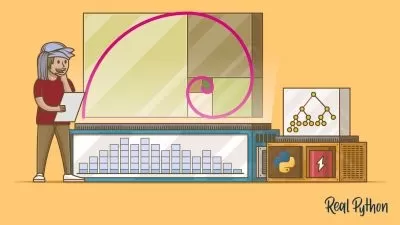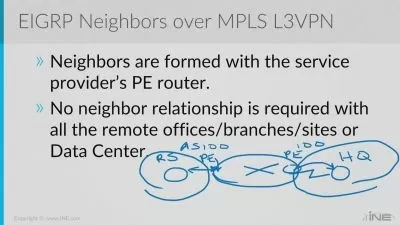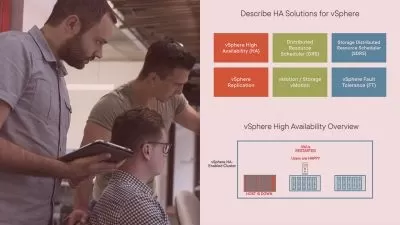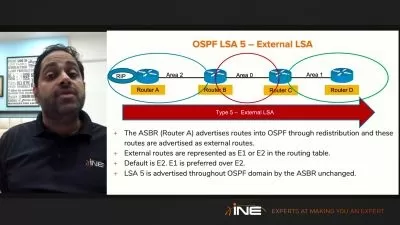Wireless Communication using Python
ShreyaKrishnan sarthak
2:22:02
Description
Master the Art of Wireless Communication with Python
What You'll Learn?
- Understanding the fundamentals of wireless communication systems, including its history and development.
- Proficiency in the simulation and analysis of various digital modulation schemes using Python.
- Knowledge of error correction coding techniques and ARQ schemes, and their implementation in Python
- Awareness of advanced topics in wireless communication, including advanced modulation and coding techniques, space-time coding, massive MIMO, and wireless secur
- Experience in implementing real-world wireless communication systems such as Zigbee, Bluetooth, Wi-Fi, and cellular networks using Python.
- Familiarity with wireless channel modeling and simulation, MIMO communications, IoT wireless communication protocols, and machine learning for wireless communic
Who is this for?
What You Need to Know?
More details
DescriptionWireless communication is a rapidly evolving field with widespread applications in various industries. This comprehensive course is designed to provide you with a deep understanding of wireless communication concepts and practical skills in implementing wireless systems using Python.
In this course, you will explore the fundamental principles of wireless communication, including modulation, coding, channel modeling, and protocols. You will learn how to use Python to simulate and analyze wireless communication systems, ranging from simple point-to-point links to complex network scenarios.
Key topics covered in the course include:
Introduction to Wireless Communication: Understand the basics of wireless communication, including frequency bands, wireless propagation, and signal modulation techniques.
Wireless Channel Modeling: Learn how to model wireless channels using path loss models, shadowing, and fading models.
Modulation Techniques: Explore various modulation schemes such as amplitude modulation, frequency modulation, and digital modulation techniques.
Error Control Coding: Discover coding techniques like Hamming codes, Reed-Solomon codes, and convolutional codes to improve the reliability of wireless communication systems.
Multiple Access Techniques: Dive into multiple access techniques such as time-division multiple access (TDMA), frequency-division multiple access (FDMA), and code-division multiple access (CDMA).
Wireless Network Protocols: Gain insights into wireless network protocols, including WiFi, Bluetooth, Zigbee, and cellular networks (4G/5G).
Wireless Security: Understand the principles of wireless security and learn about encryption, authentication, and key management techniques.
Throughout the course, you will have hands-on coding exercises and simulations using Python to reinforce your understanding of wireless communication concepts. By the end of this course, you will be equipped with the knowledge and skills to design, analyze, and implement wireless communication systems using Python.
Who this course is for:
- This course is intended for individuals who are interested in learning about wireless communication systems and want to gain hands-on experience with implementing these systems using Python. The course is suitable for students, researchers, and professionals in the field of computer science, electrical engineering, or related fields. The course is also suitable for individuals who are interested in machine learning techniques for wireless communication systems and want to learn how to implement these techniques using Python. Prerequisites for the course include a basic understanding of programming and a basic understanding of digital modulation and error correction coding.
Wireless communication is a rapidly evolving field with widespread applications in various industries. This comprehensive course is designed to provide you with a deep understanding of wireless communication concepts and practical skills in implementing wireless systems using Python.
In this course, you will explore the fundamental principles of wireless communication, including modulation, coding, channel modeling, and protocols. You will learn how to use Python to simulate and analyze wireless communication systems, ranging from simple point-to-point links to complex network scenarios.
Key topics covered in the course include:
Introduction to Wireless Communication: Understand the basics of wireless communication, including frequency bands, wireless propagation, and signal modulation techniques.
Wireless Channel Modeling: Learn how to model wireless channels using path loss models, shadowing, and fading models.
Modulation Techniques: Explore various modulation schemes such as amplitude modulation, frequency modulation, and digital modulation techniques.
Error Control Coding: Discover coding techniques like Hamming codes, Reed-Solomon codes, and convolutional codes to improve the reliability of wireless communication systems.
Multiple Access Techniques: Dive into multiple access techniques such as time-division multiple access (TDMA), frequency-division multiple access (FDMA), and code-division multiple access (CDMA).
Wireless Network Protocols: Gain insights into wireless network protocols, including WiFi, Bluetooth, Zigbee, and cellular networks (4G/5G).
Wireless Security: Understand the principles of wireless security and learn about encryption, authentication, and key management techniques.
Throughout the course, you will have hands-on coding exercises and simulations using Python to reinforce your understanding of wireless communication concepts. By the end of this course, you will be equipped with the knowledge and skills to design, analyze, and implement wireless communication systems using Python.
Who this course is for:
- This course is intended for individuals who are interested in learning about wireless communication systems and want to gain hands-on experience with implementing these systems using Python. The course is suitable for students, researchers, and professionals in the field of computer science, electrical engineering, or related fields. The course is also suitable for individuals who are interested in machine learning techniques for wireless communication systems and want to learn how to implement these techniques using Python. Prerequisites for the course include a basic understanding of programming and a basic understanding of digital modulation and error correction coding.
User Reviews
Rating
ShreyaKrishnan sarthak
Instructor's Courses
Udemy
View courses Udemy- language english
- Training sessions 80
- duration 2:22:02
- Release Date 2023/06/24

























